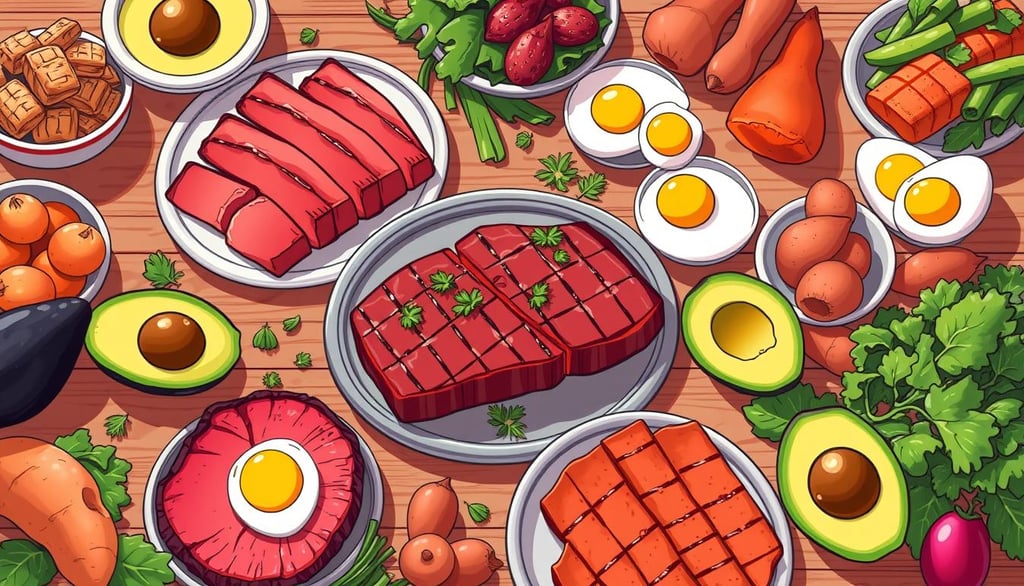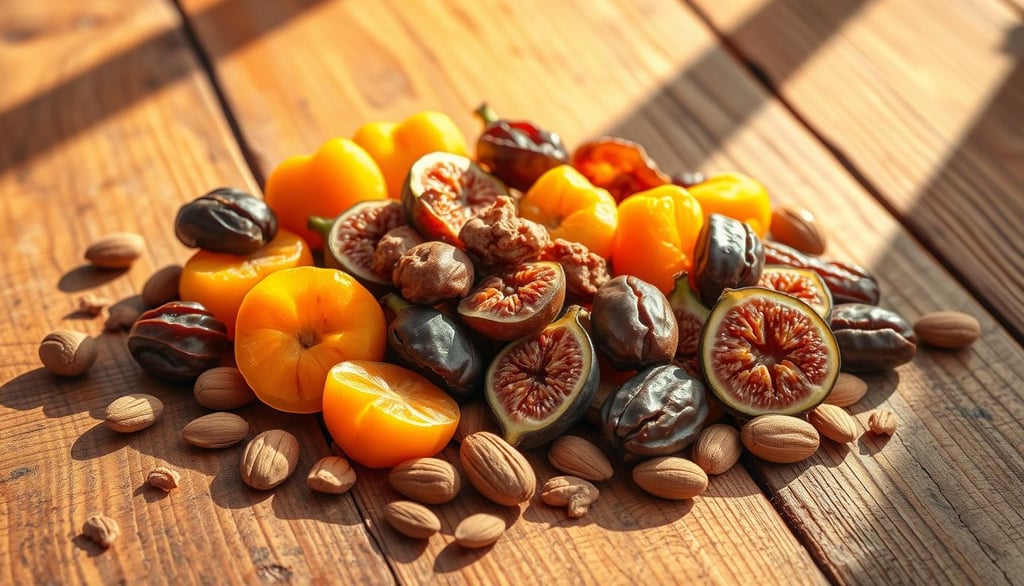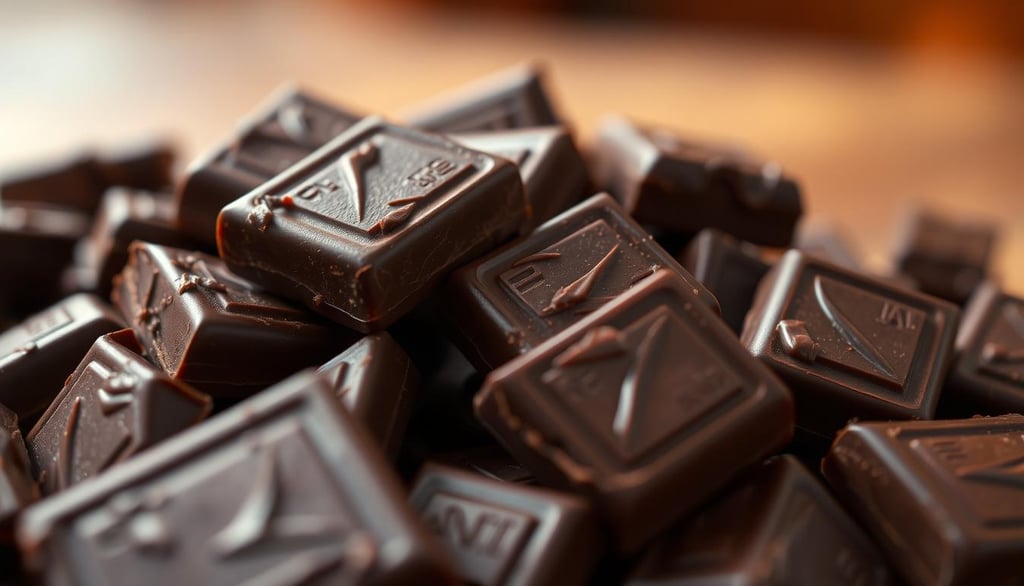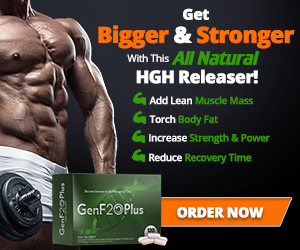Balance Diet for Weight Gain: Top Foods to Eat
Struggling to gain weight? Find out how a balance diet for weight gain can help. Get our list of top foods to eat for healthy weight gain.
WEIGHT LOSS & DIET
ActiveVitaLife
6/22/202514 min read
Balance Diet for Weight Gain: Top Foods to Eat
Many people think packing on pounds is as simple as eating anything in sight. But what if the wrong approach actually hurts your progress? Healthy muscle growth requires more than just extra calories—it demands the right mix of protein, nutrients, and smart eating habits.
This guide breaks down the best foods to help you gain weight effectively—without compromising health. From lean meats to energy-boosting snacks, discover how to make every bite count.
Key Takeaways
Quality matters more than quantity when increasing mass.
Combine plant and animal proteins for optimal muscle repair.
Frequent, smaller meals help maintain a calorie surplus.
Complex carbs provide sustained energy for workouts.
Healthy fats are essential for hormone production.
Why a Balanced Diet for Weight Gain Matters
Gaining mass isn’t just about eating more—it’s about eating smarter. The right mix of protein, carbs, and fats fuels your body efficiently, helping you build muscle instead of unwanted fat.
The Role of Macronutrients in Healthy Weight Gain
Each macronutrient plays a unique role:
Protein: A 2022 study found 1.6g per kg of body weight maximizes muscle repair. Leucine, an amino acid in eggs and meat, triggers protein synthesis.
Carbs: A 3:1 carb-to-protein ratio post-workout replenishes glycogen, which powers 50–80% of athletic performance.
Fats: NIH research shows omega-3s from fish support hormone production, critical for growth.
"Nutrient-dense foods create lean mass, while empty calories lead to fat storage."
USDA Dietary Guidelines
How Calories and Muscle Growth Are Connected
Eating more calories than you burn is essential, but quality matters. The thermic effect of food means protein burns 20–30% of its calories during digestion, while fats burn just 2–3%.
For steady results, aim for:
0.5–1 lb per week (WHO recommendation)
300-calorie surplus daily
Whole foods like oats over processed snacks
Compare 300 calories of nuts (packed with nutrients) versus candy—the former supports muscle growth, while the latter spikes blood sugar.
1. Homemade Protein Smoothies
Blending the right ingredients turns an ordinary drink into a muscle-building powerhouse. These shakes deliver 400–600 calories per serving, packed with protein and vitamins minerals to support your goals. Unlike sugary store-bought options, homemade versions let you control every nutrient.
Best Ingredients for High-Calorie Shakes
Choose base ingredients wisely:
Whey vs. plant-based protein: Whey absorbs faster, but pea or rice protein works for lactose intolerance.
Calorie boosters: Add MCT oil, chia seeds, or full-fat Greek yogurt for extra energy.
Nut butter: A spoonful of peanut or almond butter adds healthy fats and flavor.
3 Easy Recipes to Try Today
Chocolate Banana Nut Shake: Blend 1 banana, 1 scoop chocolate whey, 1 tbsp nut butter, and 1 cup milk (or soy milk).
Super Green Shake: Mix spinach, ½ avocado, ½ cup pineapple, and vanilla protein for a vitamin-rich option.
Berry Blast: Combine mixed berries, oats, and Greek yogurt for fiber and antioxidants.
Timing matters: Drink post-workout to build muscle or as a meal replacement when busy. Pre-mix dry ingredients in jars for quick prep.
2. Dairy Milk: A Classic Weight-Gain Drink
Milk has fueled athletes and bodybuilders for decades—but does it still hold up? One cup of whole milk delivers 149 calories and 8g of protein, plus a rare mix of fast and slow-digesting proteins. It’s a cost-effective way to fuel muscle growth without supplements.
Whole Milk vs. Plant-Based Alternatives
Not all milks offer the same nutrients. Compare options per cup:
Whole milk: 8g protein, 8g fat, 30% DV calcium.
Almond milk: 1g protein, often fortified but lacks natural protein.
Soy milk: 7g protein, but some brands add sugar.
Casein, making up 80% of milk’s protein, digests slowly—ideal for overnight recovery. Whey (20%) absorbs fast post-workout.
How Milk Supports Muscle Recovery
A 2022 review linked milk to preserving muscle mass. Here’s why:
Protein combo: Whey spikes protein synthesis; casein prevents breakdown.
Vitamin D (in fortified milk) aids calcium absorption for contractions.
Lactose intolerant? Try lactase drops or lactose-free versions.
"Milk’s protein ratio mirrors what athletes need—fast repair plus sustained fuel."
Journal of Sports Science
Pro tip: Blend milk with protein powder and banana for a 500-calorie shake. Or stir it into oatmeal for extra creaminess and calories.
3. Rice: The Affordable Carb Source
Rice stands as one of the most budget-friendly carb sources for those looking to increase their intake. A cup of cooked white rice delivers 204 calories, while brown offers 216—making both ideal for energy-dense meals.
White vs. Brown Rice: Which Packs More?
White rice digests faster (higher glycemic index), while brown provides extra fiber and nutrients. Choose based on goals:
Quick energy: White rice post-workout.
Sustained fuel: Brown rice for slower digestion.
5 Ways to Supercharge Your Rice Dishes
Boost calories: Stir in coconut milk or cheese.
Batch cook: Freeze portions for microwavable convenience.
Try resistant starch: Cooled rice aids gut health.
"Rice’s versatility makes it a global staple for athletes and busy families alike."
Journal of Nutrition Science
Pro tip: Washing rice reduces arsenic levels by up to 30%. Pair with eggs or lean meat for a complete protein.
4. Nuts and Nut Butter: Calorie-Dense Snacks
Nuts pack more than just crunch—they deliver concentrated energy in every bite. A quarter-cup of almonds alone provides 170 calories, plus protein and healthy fats. Whether raw, roasted, or blended into nut butter, these snacks are a smart way to fuel your day.
Almonds, Cashews, and Peanuts: A Nutritional Showdown
Each nut brings unique beneficial nutrients:
Almonds: Highest in vitamin E (7.3mg per ounce).
Cashews: Rich in iron (1.9mg) and magnesium.
Peanuts: Budget-friendly with 7g protein per serving.
Roasting enhances flavor but may reduce heat-sensitive vitamins. Dry-roasted options retain more fats than oil-roasted.
5 No-Cook Nut Butter Creations
Skip the store and whip up these easy recipes:
Peanut Butter Banana Smoothie: Blend 1 banana, 2 tbsp nut butter, and milk.
Spicy Almond Sauce: Mix almond butter, lime, and chili flakes for stir-fries.
Sunflower Seed Butter: A nut-free alternative with 3g protein per tbsp.
"Homemade nut butters avoid added sugars and preservatives, maximizing nutrient retention."
Journal of Food Science
Storage tip: Keep in cool, dark places to prevent rancidity. Bulk buys save money—store extras in the freezer.
5. Red Meats for Muscle Building
Red meats have fueled athletes for generations, but modern science reveals why they excel for muscle growth. A 3oz steak delivers 24g of protein and 2.5g of leucine—an amino acid that triggers protein synthesis. Whether you prefer sirloin or ribeye, these cuts pack nutrients hard to find in plants.
Prime vs. Choice: Selecting the Right Cut
USDA grades like Prime (more marbling) and Choice (leaner) affect flavor and fats. For lean options, pick:
Sirloin: 5g fat per 3oz, versatile for grilling.
Flank steak: Rich in iron (15% DV), ideal for marinades.
Limit intake to 50g daily to manage saturated fat while maximizing benefits.
Leucine’s Role in Recovery
This amino acid makes red meat unique. Studies show 2.5g of leucine per serving activates mTOR, a pathway critical for repairing fibers. Pair with carbs post-workout to amplify results.
"Grass-fed beef offers higher omega-3s, but grain-finished provides more consistent marbling for tenderness."
Journal of Animal Science
5 Slow-Cooker Recipes for Tough Cuts
Balsamic Chuck Roast: 8 hours on low with garlic and carrots.
Mexican Shredded Beef: Chipotle peppers + beef broth for tacos.
Red Wine Short Ribs: Melts connective tissue into collagen.
Pro tip: Sear meat first to lock in juices. Add acidic ingredients (tomatoes, vinegar) to tenderize.
6. Potatoes and Complex Carbs
Beyond fries and chips, potatoes offer serious fuel for muscle recovery and performance. Packed with complex carbs, they replenish glycogen stores that power 50-80% of workout energy. A medium russet delivers 168 calories plus potassium, vitamin C, and B6—nutrients often overlooked in starch discussions.
Glycogen Storage and Energy
Cooling cooked potatoes increases resistant starch by 50%. This fiber-like carb feeds gut bacteria while providing steady energy. Athletes benefit most when consuming complex carbs:
Pre-workout: 2 hours before for sustained fuel
Post-workout: With protein to rebuild glycogen
Evening: Cooled potatoes support overnight recovery
Healthy Preparation Methods
Oil-free roasting preserves vitamins minerals better than frying. Try these techniques:
Cube russets, toss with rosemary, bake at 400°F (205°C)
Microwave sweet potatoes, top with Greek yogurt
Make smashed potatoes with skin-on for extra fiber
"Resistant starch from cooled potatoes may improve insulin sensitivity by up to 50%."
Nutrition Research Journal
Russet vs. sweet potatoes? Both excel:
Russets: Higher starch content (37g per potato)
Sweet potatoes: More vitamin A (369% DV)
Global meals showcase versatility—try Peruvian purple potato stew or Indian aloo gobi. For potassium, one potato beats a banana (926mg vs 422mg).
7. Salmon and Oily Fish for Healthy Fats
Oily fish like salmon deliver a rare combo of protein and fats that few foods can match. A 3oz serving packs 155 calories and 22g of muscle-building protein, plus omega-3 fatty acids critical for recovery and brain health.
Omega-3 Benefits Beyond Weight Management
Wild-caught salmon contains 1.2–1.9g of omega-3 fatty acids per serving—far more than farmed varieties. These beneficial nutrients reduce inflammation and boost DHA/EPA ratios, which studies link to faster muscle repair and cognitive function.
For safety, follow FDA guidelines: Limit high-mercury fish to 2–3 servings weekly. Canned salmon (with bones) adds a calcium boost and costs 40% less than fresh.
Budget-Friendly Canned Options
Not all canned fish is created equal. Compare:
Sardines: Higher in calcium (35% DV) and lower in mercury.
Canned salmon: Retains 90% of fresh salmon’s protein and fats.
"Omega-3s from fish outperform supplements due to better absorption with natural fats."
Journal of Clinical Nutrition
Try this 5-minute recipe: Mix canned salmon with avocado, lemon, and Greek yogurt for a 400-calorie salad. Or grill fresh fillets with a honey-miso marinade to caramelize fats for extra flavor.
8. Protein Supplements: Whey and Beyond
Not all protein sources are created equal—some pack more punch per gram than others. Supplements like whey and plant-based powders help fill gaps when whole foods aren’t enough. They’re especially useful for athletes needing 1.6g of protein per kg of body weight, as studies show this maximizes lean mass gains.
Whey Concentrate vs. Isolate: What’s the Difference?
Whey concentrate contains 70–80% protein with some lactose and fat, while isolate is 90%+ pure. Both build muscle, but isolate absorbs faster—ideal post-workout. Concentrate works well for shakes or baking due to its creamier texture.
Plant-Based Alternatives for Every Diet
Pea, rice, and hemp protein supplements offer complete amino acid profiles. Try blending them into pancakes or energy balls. A 2023 study found pea protein matches whey for muscle growth when combined with resistance training.
"Mass gainers should contain
Journal of the International Society of Sports Nutrition
Timing and Cost Considerations
Post-workout: Whey or pea protein within 30 minutes.
Budget tip: Bulk-buy unflavored powders and add cocoa or fruit.
Label check: Look for NSF-certified brands to avoid contaminants.
Pro tip: Collagen protein supports joints but lacks tryptophan—pair with quinoa or turkey for a complete amino acid mix.
9. Dried Fruits for Quick Energy
Dried fruits pack a powerful punch of natural energy in a compact, shelf-stable form. Just two Medjool dates deliver 130 calories along with preserved fiber and vitamins minerals. These concentrated snacks offer a smarter alternative to processed sweets when you need fast fuel.
Choosing Between Natural and Added Sugars
Not all dried fruit is created equal. Sulfite-free options maintain more nutrients, while some brands add unnecessary sugars. Compare these popular choices:
Dates: Low glycemic index (GI 42) with natural sweetness
Raisins: Higher GI (64) but rich in iron (1mg per ounce)
Dried mango: Often contains added sugars—check labels
Smart Pairing Strategies
Combining dried fruits with protein creates balanced snacks that prevent energy crashes. Try these winning combinations:
Almond-stuffed dates (3g protein per serving)
Trail mix with walnuts and unsweetened coconut
Greek yogurt topped with dried cherries
"The fiber in dried fruits slows sugar absorption, making them superior to candy for sustained energy."
American Journal of Clinical Nutrition
For savory applications, try chopped apricots in grain bowls or curries. Dehydrating at home preserves maximum nutrients—slice fruit thinly and dry at 135°F (57°C) for 6-12 hours.
Portion control matters with these calorie-dense snacks. Pre-portion into small bags (about 1/4 cup) to avoid overeating. The iron in dried figs (2% DV per piece) makes them especially valuable for active individuals.
10. Whole Grain Breads and Sandwiches
Not all bread belongs in the same nutritional category—some slices work harder than others. Whole grain options pack fiber, B vitamins, and complex carbs that white bread strips away during processing. A 2016 study in Cereal Chemistry found sourdough fermentation boosts mineral absorption by up to 50%.
Why Sprouted Grain Outperforms White Bread
Sprouted grain bread digests easier and offers more protein. Compare two slices:
Whole wheat: 3g fiber, 5g protein, 140 calories.
White bread: 0.5g fiber, 2g protein, enriched but lacks nutrients.
Gluten-free? Try buckwheat or oat-based loaves. They cost more but avoid blood sugar spikes.
Build a 700-Calorie Muscle Sandwich
Transform lunch into a growth opportunity with these combos:
Turkey & Avocado: 4oz turkey, ½ avocado, spinach on rye.
Peanut Butter Power: 3 tbsp nut butter, banana, honey on multigrain.
Mediterranean: Hummus, roasted veggies, feta on sourdough.
"Ethnic breads like German pumpernickel or Indian roti add variety while meeting macronutrient needs."
Journal of Culinary Science
Pro tip: Freeze bread in portions to prevent waste. A panini press crisps stale slices perfectly.
11. Avocados: The Ultimate Healthy Fat
Creamy, versatile, and packed with beneficial nutrients, avocados are nature's perfect package. This green fruit delivers more than just great texture—it's loaded with compounds that support heart health and nutrient absorption.
Why Every Bite Counts
One large avocado contains about 365 calories and 30g of healthy fats. These monounsaturated fats help your body absorb vitamins A, D, and E from other foods. Unlike empty-calorie snacks, every serving provides fiber, potassium, and folate.
Choose Hass avocados for richer flavor and creamier texture. Florida varieties are larger but milder. Speed up ripening by placing them in a paper bag with a banana—the ethylene gas accelerates the process.
Beyond Basic Guacamole
Avocados shine in unexpected dishes. Blend one into chocolate mousse for a dairy-free dessert. Or try these fresh ideas:
Oil-free dressings: Puree with lemon, garlic, and herbs
Grilled slices: Brush with lime juice, char for 2 minutes
Global twists: Brazilian avocado smoothies or Filipino ice cream
"Avocado's fat profile improves carotenoid absorption from vegetables by 4-5 times compared to fat-free meals."
Journal of Nutrition
Prevent browning by leaving the pit in unused portions or brushing with citrus juice. For long-term storage, freeze pureed avocado with a touch of vinegar.
12. Whole Grain Cereals and Oats
A humble bowl of oatmeal becomes a calorie-packed meal when loaded strategically. Half a cup of dry oats delivers 150 calories, but creative additions can quadruple that while boosting nutrients.
Steel-Cut vs Rolled: Texture and Nutrition
Steel-cut oats digest slower due to their dense structure, while rolled oats absorb liquids faster. Nutritionally, they're nearly identical—both provide:
5g protein per serving
4g fiber (15% DV)
Iron and magnesium
Building a 1000-Calorie Power Bowl
Transform basic oats into a muscle-fueling feast with these layers:
Base: 1 cup cooked oats (300 calories)
Liquid: 1 cup whole milk (150 calories)
Boosters: 2 tbsp nut butter, ¼ cup granola, ½ banana (550 calories total)
"Soaking oats overnight reduces phytates by 50%, improving mineral absorption without cooking."
Journal of Food Science
7-Day Flavor Rotation Plan
Prevent breakfast boredom with these combos:
Monday: Pumpkin pie (pumpkin puree + cinnamon)
Wednesday: Tropical (coconut milk + mango)
Friday: Savory (fried egg + avocado)
Commercial cereals often hide 12g+ added sugar per serving. Make your own granola with honey and nuts for controlled sweetness.
10 High-Calorie Mix-Ins
Boost any bowl with these additions:
Chia seeds (70 calories/tbsp)
Greek yogurt (100 calories/½ cup)
Dark chocolate chips (70 calories/tbsp)
Store bulk oats in airtight containers with oxygen absorbers. For quick mornings, pre-portion dry ingredients in mason jars—just add liquid and shake.
Pair these cereals with cereal bars for portable nutrition. The right combinations turn simple grains into growth fuel.
13. Cereal Bars for On-the-Go Nutrition
Busy schedules demand smart nutrition solutions that travel well. Cereal bars bridge the gap between convenience and quality fuel, offering 150-200 calories per serving. Whether store-bought or homemade, they deliver energy when you need it most.
Decoding Store Shelves
Not all commercial bars are created equal. Look for these features:
Protein content above 10g per bar
Whole food ingredients like oats and nuts
Limited added sugars (under 8g)
Popular brands vary widely in nutrients. Some use sugar alcohols for sweetness, which may cause digestive issues in sensitive individuals.
DIY Power Bars in Minutes
Homemade versions beat store options for freshness and cost. Try this no-bake recipe:
Mix 1 cup oats, ½ cup protein powder, ¼ cup nut butter
Bind with honey or mashed bananas
Press into pan, chill, and slice
"Portable nutrition should complement whole foods, not replace them entirely."
Academy of Nutrition and Dietetics
For keto-friendly versions, use almond flour and sugar-free sweeteners. Store in portion-controlled bags for grab-and-go convenience. Pair with Greek yogurt or hard-boiled eggs for balanced nutrients.
14. Dark Chocolate as a Sweet Treat
The rich aroma of high-quality dark chocolate signals more than just indulgence—it's packed with muscle-supporting compounds. Unlike milk chocolate, minimally processed varieties deliver beneficial nutrients with fewer added sugars. A 100g bar contains 600 calories, making it an energy-dense option for active individuals.
Why 70% Cacao Matters
Higher cacao percentages mean more flavanols—antioxidants shown in 2023 studies to reduce exercise-induced inflammation. Compare these impacts:
70-85%: Optimal balance of bitterness and polyphenols (140mg flavanols/oz)
90%+: Intense flavor but higher theobromine (may affect sleep if eaten late)
Below 60%: Often contains excess sugar that counteracts benefits
Smart Ways to Enjoy Dark Chocolate
Transform basic squares into recovery-focused snacks:
Protein Bark: Melt 85% chocolate, mix with whey powder and almonds
Post-Workout Shake: Blend cocoa nibs with banana and peanut butter
Savory Pairings: Try with olives or aged cheese for contrasting flavors
"Single-origin chocolates from Peru and Madagascar offer distinct flavonoid profiles due to soil variations."
Journal of Food Composition and Analysis
For safer consumption, choose brands tested for heavy metals. Consumer Reports found certain dark chocolates exceed California’s lead limits. Fair trade certifications ensure ethical sourcing while supporting farmer communities.
15. Cheese: A Versatile Calorie Booster
From creamy brie to sharp cheddar, cheese delivers a powerhouse of flavor and nutrition. One ounce of cheddar packs 110 calories and 7g of protein, making it an efficient way to enhance meals. Its versatility spans cultures and cuisines, offering both taste and functional benefits.
Nutrition Showdown: Hard vs. Soft Cheeses
Texture impacts more than mouthfeel—it changes nutritional profiles:
Hard cheeses (Parmesan, aged gouda): Lower lactose, higher protein concentration from moisture loss during aging.
Soft cheeses (brie, camembert): More saturated fat but richer in vitamin K2 for bone health.
Swiss cheese naturally contains less sodium than most varieties, while feta offers probiotic benefits from brine aging. Always check labels—processed cheese often adds emulsifiers that alter melting properties.
15 Smart Ways to Use Cheese Daily
Transform ordinary foods with these ideas:
Breakfast boost: Fold ricotta into scrambled eggs for extra creaminess
Global twists: Try halloumi grilled or queso fresco crumbled on tacos
Snack hacks: Pair apple slices with sharp cheddar for balanced energy
"Aged cheeses develop tyrosine crystals that enhance umami flavor while being naturally lactose-free."
Journal of Dairy Science
For sauces, combine evaporated milk with sharp varieties for smooth melting without separation. Freeze grated hard cheeses in portions for easy use—they retain flavor better than pre-shredded options with anti-caking agents.
Conclusion: Building Your Weight Gain Diet
Sustainable results come from consistency, not shortcuts. Focus on whole foods rich in protein and nutrients to support muscle repair and energy needs.
Plan meals around lean meats, complex carbs, and healthy fats. Track progress weekly—adjust portions if stalls occur. A food scale and journal help stay accurate.
Pair this approach with strength training for best results. Rapid changes often mean water or fat, not lean mass. Trust the process.
Small steps add up. Start today.
FAQ
What are the best high-calorie ingredients for protein smoothies?
Greek yogurt, whole milk, nut butter, and oats add calories and protein. Adding a scoop of whey or plant-based powder boosts intake further.
Is whole milk better than almond milk for gaining mass?
Yes, whole milk has more calories, saturated fat, and protein—key for muscle growth. Almond milk is lower in calories unless fortified.
How does salmon help with healthy weight gain?
Salmon provides omega-3 fatty acids, which reduce inflammation and support muscle recovery. Its healthy fats also add extra calories.
Can dark chocolate be part of a weight-gain plan?
Absolutely! Dark chocolate (70% cacao or higher) offers antioxidants and healthy fats. Pair it with nuts or Greek yogurt for added protein.
What’s the best way to prepare potatoes for maximum benefits?
Bake or roast them with olive oil for extra calories. Avoid deep-frying to keep meals nutrient-dense without excess unhealthy fats.
Are protein supplements necessary for muscle growth?
Not always, but they help if you struggle to meet protein needs through food. Mass gainers work well for those needing extra calories.
How can I make oatmeal more calorie-dense?
Stir in nut butter, chia seeds, or full-fat milk. Top with sliced bananas, honey, or granola for an energy boost.
What’s a quick high-calorie snack option?
Trail mix with nuts, dried fruit, and dark chocolate chunks. Or try avocado on whole-grain toast with a sprinkle of cheese.
Read the Article: What are the proven nicotinamide riboside benefits for anti-aging?
Activevitalife
Your Guide to Weight Management & Muscle Building
Contact:
Trust
contact@activevitalife.click
© 2025. All rights reserved.
Disclaimer: The information provided on this blog is for general informational and educational purposes only and should not be considered medical advice. The content is not intended to diagnose, treat, cure, or prevent any disease or health condition.








